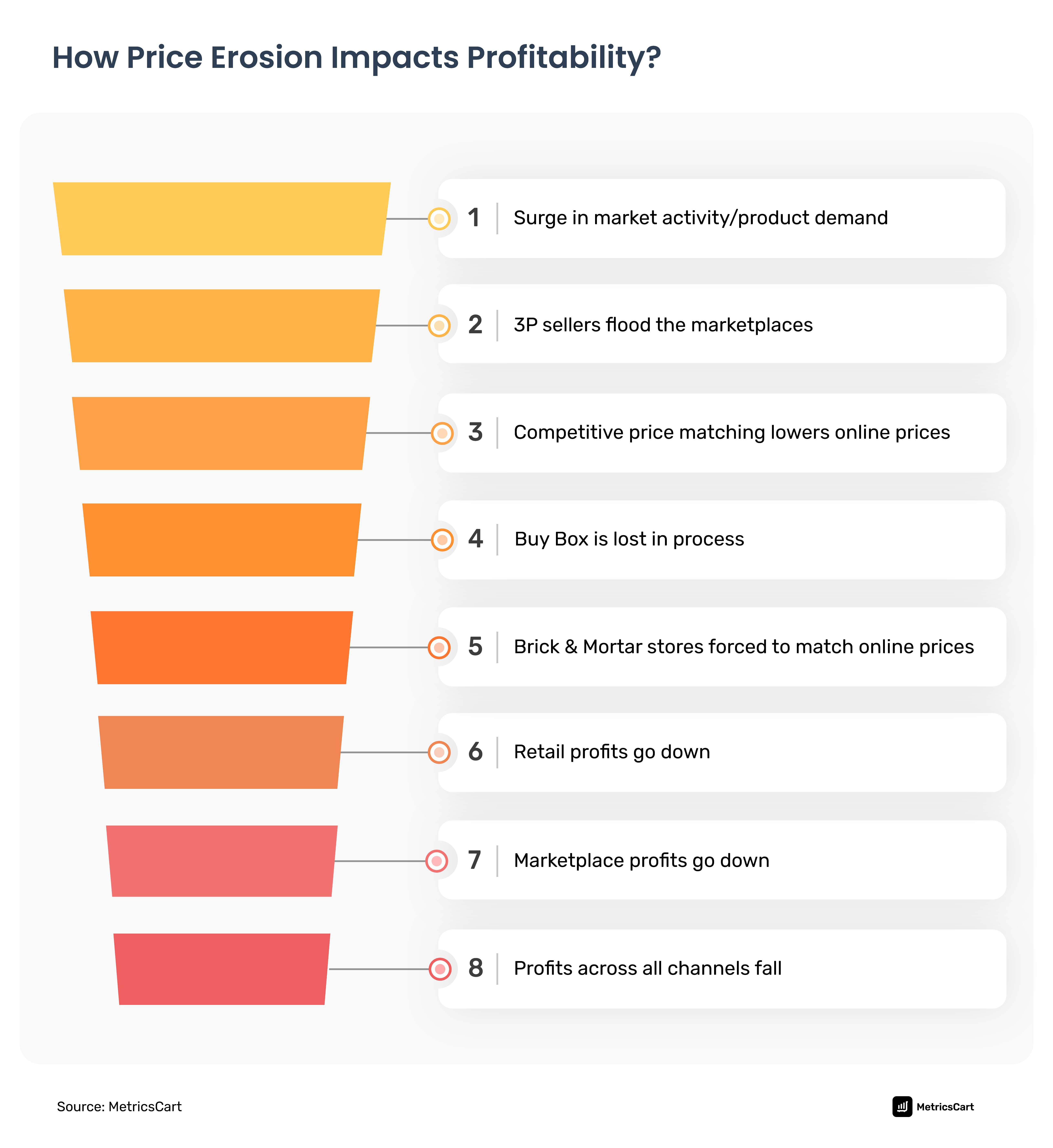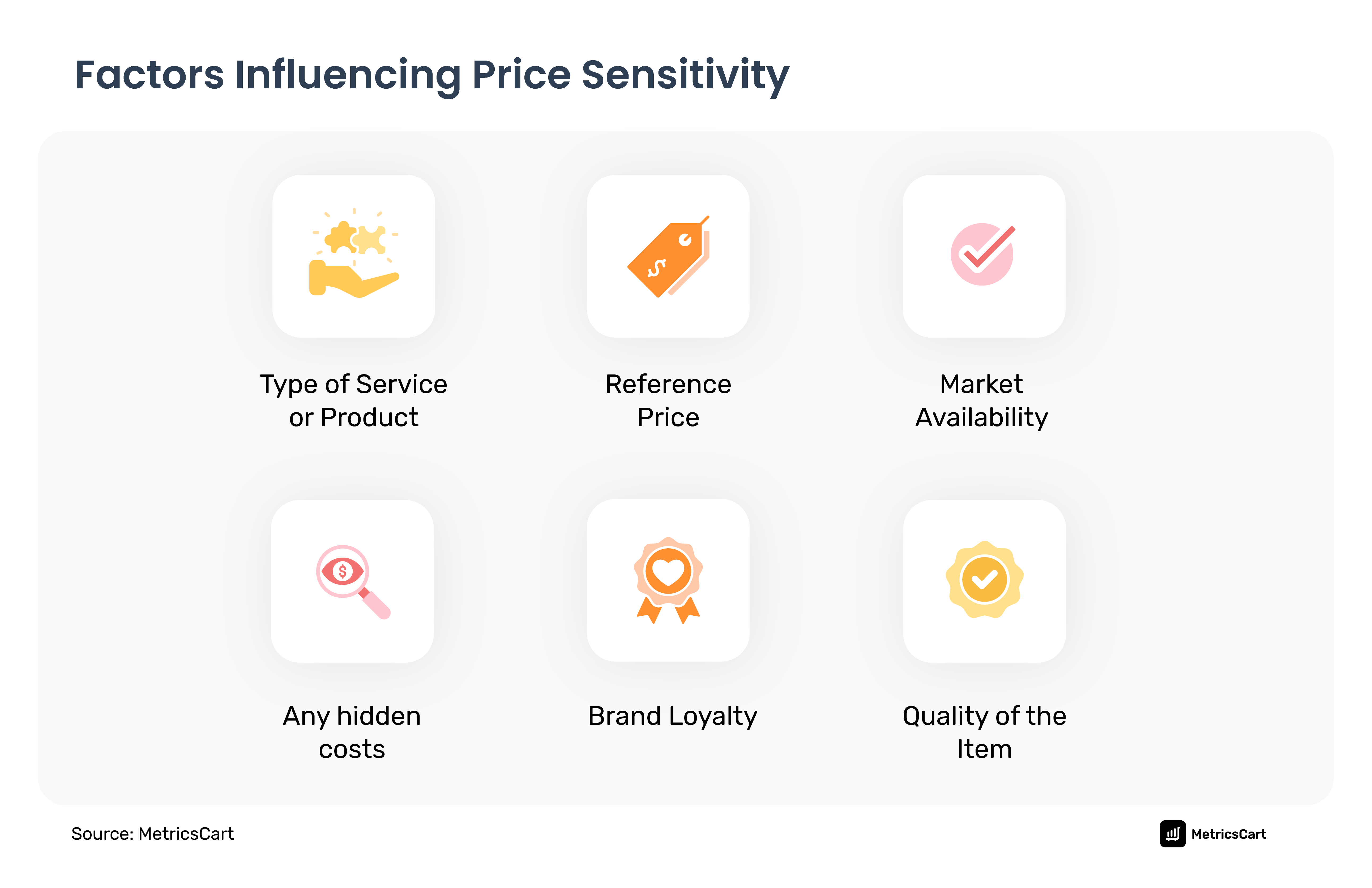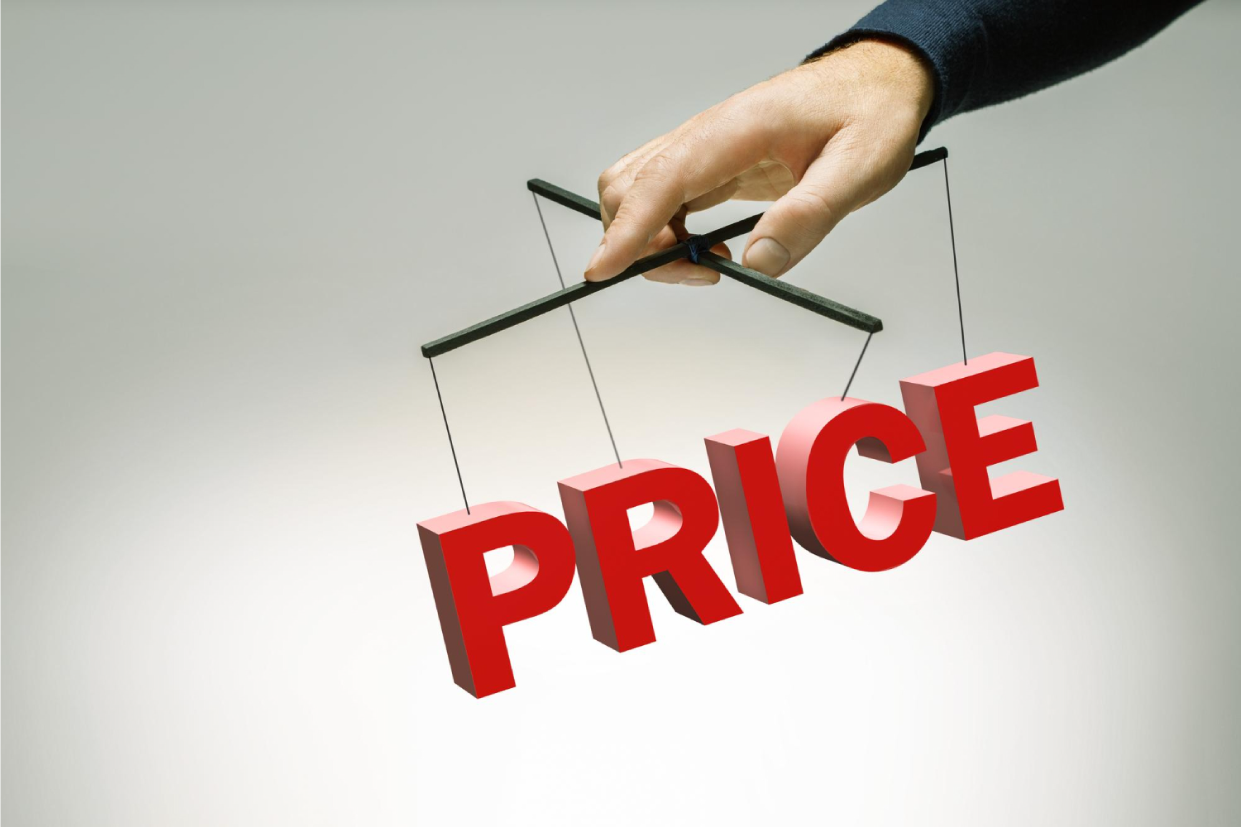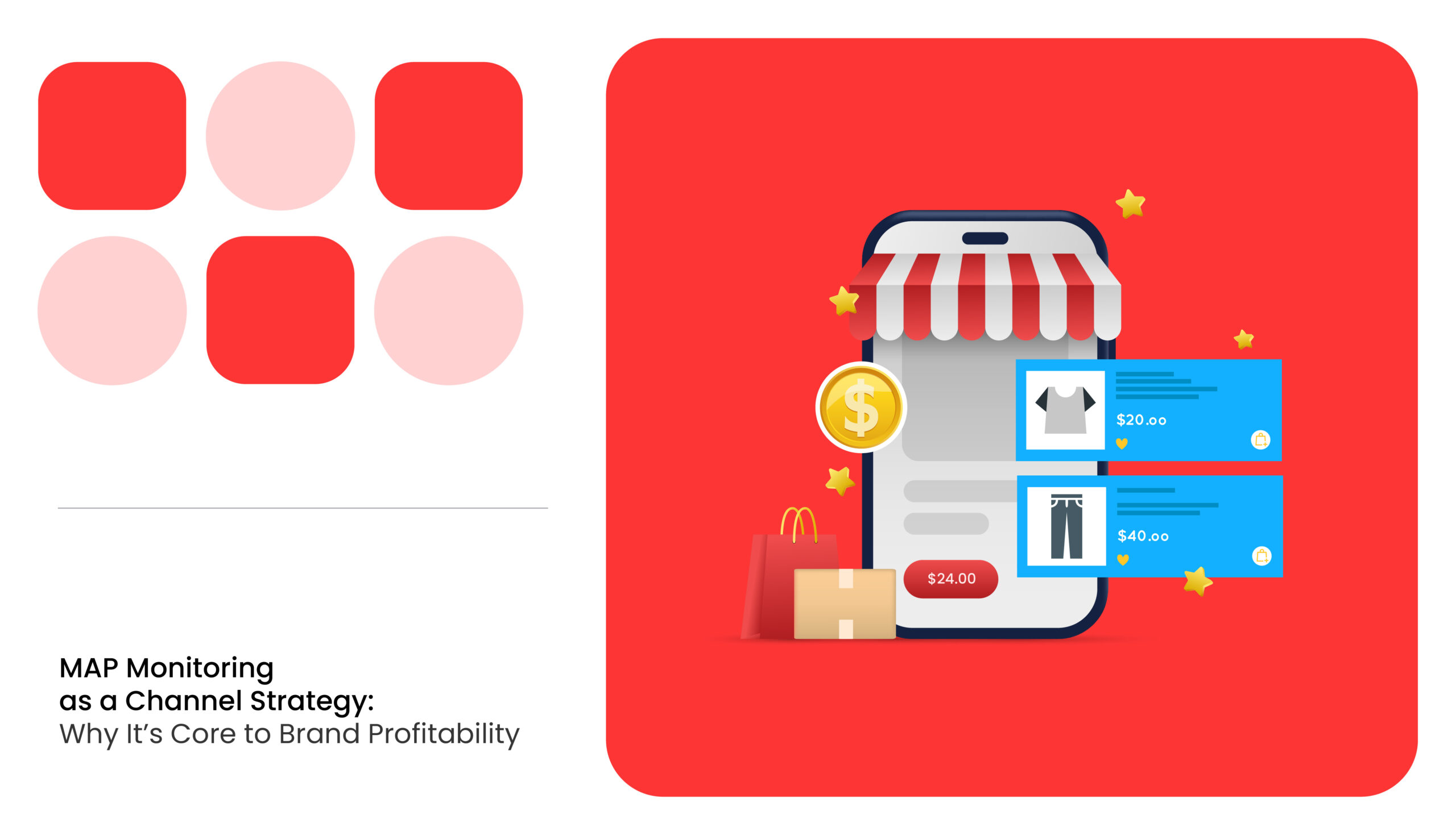The Online Consumer Behavior Report highlights that 82% of consumers compare prices before making a purchase online. To cater to the needs of price-sensitive customers, brands often try to outperform each other. This ultimately results in price drops.
Price erosion is the consistent fall of a product’s price over time. From a brand’s perspective, a product’s price is essentially the perceived value of the product. When a brand is forced to reduce the price, this is a case of price erosion.
In online marketplaces, price erosion occurs when third-party sellers lower the product prices of a brand that violates its MAP policies.
Price Wars vs. Price Erosion: What is the Difference?
Though both mean reductions in prices over time, price erosion is the precursor to price wars.
| Price Erosion | Price Wars | |
|---|---|---|
| Nature | Involves a slow and steady decline in the prices of goods or services over an extended period | Involves a series of rapid price reductions by competing businesses, often in response to each other's price cuts |
| Causes | Various factors such as technological advancements, increased competition, changes in consumer preferences, or improvements in production efficiency | Specific events such as a new entrant in the market, an aggressive marketing campaign, or a strategic decision by a company to gain market share quickly |
| Time | A sustained downward trend in prices over time | Unfold rapidly with competitors adjusting prices in quick succession as they attempt to outdo each other |
| Strategic Intent | May not always be a deliberate strategy but can be a consequence of market forces and changes in the business environment | Often intentional and strategic, with companies actively engaging in aggressive pricing to gain a competitive advantage or to respond to a perceived threat |
Impact of Price Erosion on Brand Resilience
Eventually, both brands and retailers face the consequences of price erosion. Retailers lose the expected margins on products that they have purchased, marketed, and anticipated revenue against.
The profit erosion cycle is a chain reaction that sets off due to the consistent lowering of prices by retailers and 3P sellers. The chart below briefly explains this downward spiral of profitability.

To put this in perspective, consider the following example:
Amazon does regular price experiments on the platform. This involves introducing price variations among 1P sellers by reducing the price of the said product. This can trigger a downward spiral.
Sometimes, price erosion can also be caused by 3P sellers who want to drive sales and lower the price of the product on Amazon to win the Buy Box. This automatically forces other sales channels, including brick-and-mortar stores, to reduce their prices to compete.
Read more: MAP Monitoring for Online Sellers: What You Need To Know
Some negative effects of price erosion on brands include:
Disincentivizes Brands to Sell Products
As prices erode over time, brands may find their profit margins squeezed. Lower prices mean that the percent of profit on each sale decreases, potentially affecting the overall profitability of the business.
Puts a Financial Strain on the Brand
With eroded prices, retailers have to sell at cost. In such cases, retailers require markdowns as they are no longer getting the desired margins which could cause a dent in the brand’s overall revenue.
Impact Perceived Value and Brand Image
Persistent price erosion can contribute to a perception of lower product or service quality. Customers may associate lower prices with inferior products, which harms the brand image and makes it more difficult to justify higher-quality offerings.
How Brands Combat Price Erosion?
In the third quarter of 2023, 60% of the paid units sold on Amazon were by third-party sellers. There are several strategies brands use to tackle price erosion caused by 1P and 3P sellers online.

Understanding the Motivations of a Price-Sensitive Consumer
Decoding the price sensitivity of products can help brands set the right prices. For instance, a high-ticket product (that is generally considered non-essential) in a saturated market can have high price sensitivity as it can have multiple substitutes.
The ‘Global Drivers of Consumer Choice’ study by BCG showed that American consumers are fairly price-sensitive across 8 out of 10 chosen categories. Many factors influence price sensitivity.

A price-sensitive customer may not always be willing to pay higher prices for high-value options. A detailed understanding of prospects’ willingness to pay using customer analytics and segmentation eliminates confusion among sellers. This data can be utilized to set accurate floor, target, and stretch prices for each customer and product segment.
Building a consistent, objective pricing framework that has minor variance in pricing bands slows down the rate of price erosion and protects market share. This requires brands to monitor their competitors’ prices from time to time.
An e-commerce price monitoring solution helps collect real-time data based on competitor price movements, receive alerts when there are price deductions, track competitors’ and third-party sellers’ price points, and much more.
Monitoring MAP Violations
Most brands have a MAP compliance policy in place but it only serves as useful for authorized third-party sellers. It doesn’t help prevent unauthorized third-party sellers from pricing products differently online.
Price erosion is mostly driven by unauthorized third-party sellers who offer unregulated discounts that hurt a brand’s reputation and profitability. This is also common among first-party sellers online.
MAP monitoring software helps brands automatically monitor the prices at which third-party sellers sell products and simultaneously track any MAP violations. Brands can also receive alerts whenever there are changes in minimum price and establish price parity across all online marketplaces.
Read more: How Do Brands Manage MAP Violations?
Reviewing Distribution Strategies
A strategic distribution plan requires brands to vet retailers to decide if they are trustworthy enough to work with. Several third party sellers, for instance, lower their prices to win the Buy Box on Amazon.
In simple terms, a product distribution strategy includes all the processes and methods a business uses to deliver its products to customers. Ideally, there shouldn’t arise a situation where customers prefer to buy a brand’s products on certain channels because of the price deductions. This can negatively affect the consumers’ perception of the brand.
In addition, there might be sellers who compromise the brand’s image with subpar product pages that include low-grade product listings, pixelated product images, incorrect product descriptions, etc. that do not compel consumers to hit the “Buy Now” button.
A strong content compliance system across all distribution channels enables better brand recall no matter who the seller is. Regular content scorecards can also be scheduled to help enforce clear brand messaging.
Read more: Guide to MAP Enforcement
Is Price Erosion Avoidable?
As discussed above, price erosion is not just limited to e-commerce distribution channels with offline sellers also contributing to the problem. In addition, lack of clarity within MAP policies makes enforcement tricky and leaves scope for sellers to get away with violations.
Price erosion, ultimately, is part of a product’s lifecycle. But, slowing down its occurrence can leave a measurably positive impact on profit margins for both manufacturers and retailers. By doing so, brands can shield both themselves and sellers from unwanted margin erosion and enjoy sustained growth.





